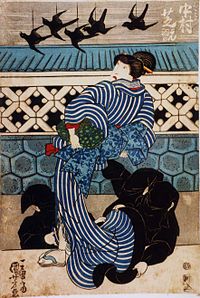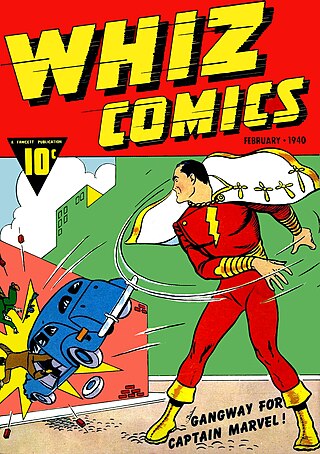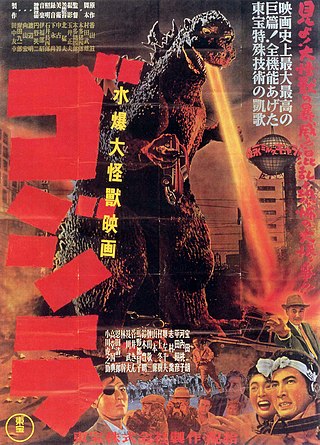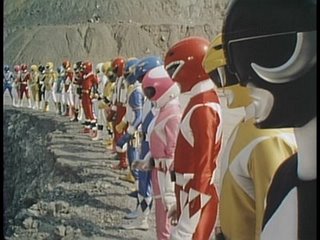This article needs additional citations for verification .(February 2019) |


Kuroko (Japanese: 黒衣, lit. "black clad") [1] are stagehands in traditional Japanese theatre, who dress all in black.
This article needs additional citations for verification .(February 2019) |


Kuroko (Japanese: 黒衣, lit. "black clad") [1] are stagehands in traditional Japanese theatre, who dress all in black.
黒衣 is primarily read kurogo, differentiating from the other readings kokui/kokue/kuroginu "black clothes" – the go/gi suffix underlining the wearing intent. Another synonym for the stagehands was also 黒具 kurogo "black instrument" as they were meant to serve the performance. Over time the non voiced mispronounciation kuroko also started being popularly used, and needed its own spelling that took the simple 子 ko character as an ateji (sound only), making the 黒子 kuroko word. Originally though 黒子 was read hokuro and meant "beauty spot". By contamination nowadays the two readings kuroko/kurogo are both available for the two spellings 黒衣/黒子.
In kabuki, the kuroko serve many of the same purposes as running crew. They move scenery and props on stage, aiding in scene changes and costume changes. They will also often play the role of animals, will-o-the-wisps, or other roles which are played not by an actor in full costume, but by holding a prop. Kuroko wear all black, head to toe, in order to imply that they are invisible and not part of the action onstage.
The convention of wearing black to imply that the wearer is invisible on stage is a central element in bunraku puppet theatre as well. Kuroko will wear white or blue in order to blend in with the background in a scene set, for example, in a snowstorm, or at sea, in which case they are referred to as "Yukigo" (雪衣, snow clad) or "Namigo" (波衣, wave clad) respectively. As this convention was extended to kabuki actors depicting stealthy ninja, historian Stephen Turnbull suggested that the stereotypical image of a ninja dressed all in black derived from kabuki. The theatrical convention of dressing ninja characters as apparent stagehands to imply stealth and to surprise audiences contributed to this popular image, in contrast to the historical reality that real ninjas usually dressed like civilians. [2]
In Noh theatre, a kōken, wearing black but no mask, serves much the same purpose.
Costume is the distinctive style of dress or cosmetic of an individual or group that reflects class, gender, profession, ethnicity, nationality, activity or epoch. In short costume is a cultural visual of the people.

Kabuki is a classical form of Japanese theatre, mixing dramatic performance with traditional dance. Kabuki theatre is known for its heavily stylised performances, its glamorous, highly decorated costumes, and for the elaborate kumadori make-up worn by some of its performers.

A superhero or superheroine is a stock character who typically possesses superpowers or abilities beyond those of ordinary people, is frequently costumed concealing their identity, and fits the role of the hero; typically using their powers to help the world become a better place, or dedicating themselves to protecting the public and fighting crime. Superhero fiction is the genre of fiction that is centered on such characters, especially, since the 1930s, in American comic books, as well as in Japanese media.

Japanese traditional dance describes a number of Japanese dance styles with a long history and prescribed method of performance. Some of the oldest forms of traditional Japanese dance may be among those transmitted through the kagura tradition, or folk dances relating to food producing activities such as planting rice and fishing, including rain dances. There are large number of these traditional dances, which are often subfixed -odori, -asobi, and -mai, and may be specific to a region or village. Mai and odori are the two main groups of Japanese dances, and the term buyō (舞踊) was coined in modern times as a general term for dance, by combining mai (舞) and odori (踊).

Tabi are traditional Japanese socks worn with thonged footwear such as zori, dating back to the 15th century.

Noh is a major form of classical Japanese dance-drama that has been performed since the 14th century. Developed by Kan'ami and his son Zeami, it is the oldest major theater art that is still regularly performed today. Although the terms Noh and nōgaku are sometimes used interchangeably, nōgaku encompasses both Noh and kyōgen. Traditionally, a full nōgaku program included several Noh plays with comedic kyōgen plays in between; an abbreviated program of two Noh plays with one kyōgen piece has become common today. Optionally, the ritual performance Okina may be presented in the very beginning of nōgaku presentation.

Tokusatsu is a Japanese term for live-action films or television programs that make heavy use of practical special effects. Credited to special effects director Eiji Tsuburaya, tokusatsu mainly refers to science fiction, war, fantasy, or horror media featuring such technology but is also occasionally dubbed a genre itself. Its contemporary use originated in the Japanese mass media around 1958 to explain special effects in an easy-to-understand manner and was popularized during the "first monster boom" (1966-1968). Prior to the monster boom, it was known in Japan as Tokushu gijutsu or shortened Tokugi.

Bunraku is a form of traditional Japanese puppet theatre, founded in Osaka in the beginning of the 17th century, which is still performed in the modern day. Three kinds of performers take part in a bunraku performance: the Ningyōtsukai or Ningyōzukai (puppeteers), the tayū (chanters), and shamisen musicians. Occasionally other instruments such as taiko drums will be used. The combination of chanting and shamisen playing is called jōruri and the Japanese word for puppet is ningyō. It is used in many plays.

Toei Company, Ltd. is a Japanese entertainment company. Headquartered in Ginza, Chūō, Tokyo, it is involved in film and television production, distribution, video game development, publishing, and ownership of 34 movie theaters. Toei also owns and operates studios in Tokyo and Kyoto and holds shares in several television companies. The company is renowned for its production of anime and live-action dramas known as tokusatsu, which incorporate special visual effects. It is also known for producing period dramas. Internationally, Toei is the majority shareholder of Toei Animation and is recognized for its franchises such as Kamen Rider and Super Sentai.

Kamen no Ninja Akakage is a Japanese manga series written and Illustrated by Mitsuteru Yokoyama. It was originally serialized in Shogakukan's shōnen manga magazine Weekly Shōnen Sunday from 1966 to 1967.

Traditional Japanese theatre is among the oldest theatre traditions in the world. Traditional theatre includes Noh, a spiritual drama, and its comic accompaniment kyōgen; kabuki, a dance and music theatrical tradition; bunraku, puppetry; and yose, a spoken drama.

Double Suicide is a 1969 Japanese historical drama film directed by Masahiro Shinoda. It is based on the 1721 bunraku play The Love Suicides at Amijima by Monzaemon Chikamatsu.
Kuroko may also refer to several fictional characters:
Downtown no Gottsu Ee Kanji, was a Japanese variety show. It premiered on December 8, 1991 and ended its run on November 2, 1997. It aired on Fuji TV every Sunday night. Hosted by the comedy duo Downtown, it had several other actors and comedians in its regular cast, including You, Koji Imada, Koji Higashino, Itsuji Itao, Ryoko Shinohara and Honkon.

Super Sentai World is a short 3-D superhero film based on the Super Sentai franchise that was shown in 1994 in amusement parks and special events nationwide in Japan. It was shown as a triple feature alongside Kamen Rider World and Toei Hero Daishugō.

Taishū engeki is a genre of popular theatre in Japan, frequently described as "light theatre", and compared to forms such as musical theatre and the revue.

Tsutomu Kitagawa is a Japanese actor and stuntman who is mostly known for playing Godzilla for the "Millennium" series. He also played King Ghidorah for Rebirth of Mothra III. He also played the costumed actor for the Blue Ranger in many of Toei Company's Super Sentai Series in the 1980s, better known in the United States as Power Rangers. Kitagawa graduated from Sakuragaoka High School before joining Sonny Chiba's Japan Action Club in January 1975.
Hirofumi Ishigaki is a Japanese actor and director.

A mino (蓑) is a traditional Japanese raincoat made out of straw. Traditional mino are an article of outerwear covering the entire body, although shorter ones resembling grass skirts were also historically used to cover the lower body alone. Similar straw capes were also used in China, Vietnam and Korea.
The earliest pictorial reference to a ninja in black is a book illustration of 1801, which shows a ninja climbing into a castle wearing what everyone would immediately recognise as a ninja costume. However, it could simply be that it is pictures like these that have given us our image of the ninja rather than vice-versa. It is a long-standing artistic convention in Japan, seen today in the Bunraku puppet theatre, that to dress a character in black is to indicate to the viewer that he cannot see that person. To depict a silent assassin in an identical way in a picture would therefore be perfectly natural and understandable to the contemporary Japanese viewer, and need not imply that the resulting illustration is in any way an actual portrait of a ninja.